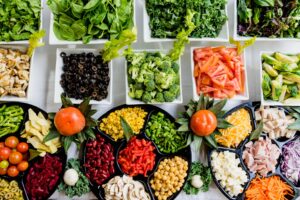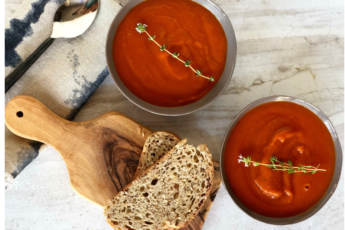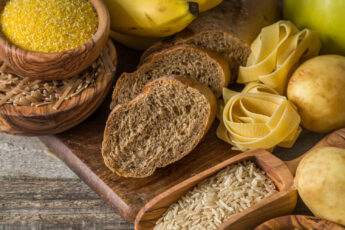“Clean food is healthier.”
“Only eat foods with ingredients you can pronounce.”
“Only buy foods with clean labels.”
Sound confusing and exhausting? I agree! Do you have to do all that to “eat clean”? This movement is building, but – uh – what do clean eating and clean labels mean?
Before we unpack all this, there’s something important to know:
- There’s no regulated definition of “clean label”, so food producers large and small can brag about having “clean label” products, no matter what’s in them. Legally, they’re bulletproof.
- A recent survey by the International Food Information Council found that consumers felt being a “clean eater” meant eating foods not highly processed, followed by eating fresh produce, organic foods, and foods with a simple ingredient list.
- Despite no formal definition for a clean label or clean food, most manufacturers won’t push the limit too far away from consumer perception.
Someone credible needs to write a book on how to sort this out. Well, someone did, and I went straight to her for help. Enter Bonnie Taub-Dix, RDN, creator of BetterThanDieting.com, and author of Read It Before You Eat It – Taking You from Label to Table.
What’s Taub-Dix’s definition of “clean eating”? “To me, clean eating means that my kids cleared the table and did the dishes. To others, however, this term has a completely different definition.”
 Chemicals. Processed Food. Still “Clean”?
Chemicals. Processed Food. Still “Clean”?
Taub-Dix doesn’t go in for all the hype about ingredient lists that are short or simple to pronounce. “Although I applaud this approach for some foods (like almond butter that only contains almonds), it doesn’t always apply. My favorite bread, for example, contains more than 25 ingredients on its label and it’s also organic, and has whole grains and a wealth of other nutrients of value… far from a short list.”
The idea of avoiding “chemical-sounding” ingredients doesn’t fly with her either. She points out that ascorbic acid, for example, “might sound scary is merely the chemical name for vitamin C, a nutrient you might otherwise welcome.” I know I would!
To avoid making an illegal health claim, many labels just boast that they “contain no…” or are “free from…” Taub-Dix says, “’Free-from’ on a label could be essential, especially when it comes to certain food allergies or intolerances,” but it doesn’t necessarily make the food healthful. A food free from gluten could be laden with sugar, salt, additives and preservatives and not what you consider to be ‘clean’.” It can even end up being more costly, if it’s used as a marketing gimmick or to imply the food is healthier.
The IFIC survey found that consumers strongly linked clean eating to eating less processed foods. Taub-Dix would like to correct that perception. “Processed,” she says, “is another word that’s misunderstood. Processing helps make foods more digestible and helps preserve food.” Still, she notes the limitation about this. “Highly processed foods, often bring more calories, fat, sugar and sodium, than you’d expect, so if you’re trying to eat cleaner, then choosing foods that are minimally processed.”
So Is “Clean Eating” Better For You?
Lacking a definition of clean label, it’s impossible to answer this question. There’s no evidence that avoiding all “artificial ingredients” is somehow healthier. Health t the only reason people make particular choices though. People also make food choices because it fits their “food philosophy” or ideology, or just makes them feel better emotionally. We all like attractive looking food, because we do eat with our eyes, so having an eating style that’s based at least partially on emotions, ideology, or philosophy isn’t hard to understand.
Cut-To-The-Chase Takeaway
“Clean eating” is nonspecific, so make it meaningful to YOU.
- Instead of saying you want to “eat clean” say what it is you want to make happen. Maybe say you want to eat more fruits and vegetables. Then set a goal of eating even one more serving a day, or making sure to serve at least a fruit or veggie at each meal.
- Instead of saying you want to eat foods with fewer ingredients, go to a credible source (Taub-Dix’s book is one!) to learn more about those ingredients and why they’re in the food.
- This I can tell you: it’s OK to go slowly. Changing your diet, no matter what eating style you have or want, doesn’t have to be done all at once. A happy eating style is a matter of eating what we need, and not avoiding what we don’t’ want to live without, either.
Featured photo by Dose Juice on Unsplash







